Information transmission is a process in communication technology that enables information to move from a source location to a destination. It is the process of sending and receiving information from one person or location to another.
In this simple guide, you will learn:
- How to apply the different types of information transmission
- How to identify and use the modes of information transmission
- How to differentiate between the methods of information transmission
- Lots more
So, if you want to learn about information transmission, then, keep scrolling. Let’s quickly ‘hit the road’.
- Contents
- Meaning of Information Transmission
- What is Information Transmission?
- Why is information transmission important?
- The importance of information transmission
- Examples of information transmission
- Types of Information Transmission
- Modes of Information Transmission
- Audio: using sound to transmit information
- Visual: using illustration to transmit information
- Audio-visual: combining sound and illustration when sending information
- Methods of Information Transmission
- Ancient methods of transmitting information: how information is transmitted in ancient civilization
- Oral communication
- Drum beats
- Fire lightening
- Town crying
- Whistling
- Drawing diagrams
- Making representation
- Modern methods of transmitting information:
- Conclusion
Contents
SECTION ONE
Meaning of Information Transmission
In this section, I’ll define information transmission, and we’ll explore its importance and some examples.
What is Information Transmission?
Information transmission is a process of moving information from a source to a destination. The source can be a person or a location and the destination can be a person or a location.
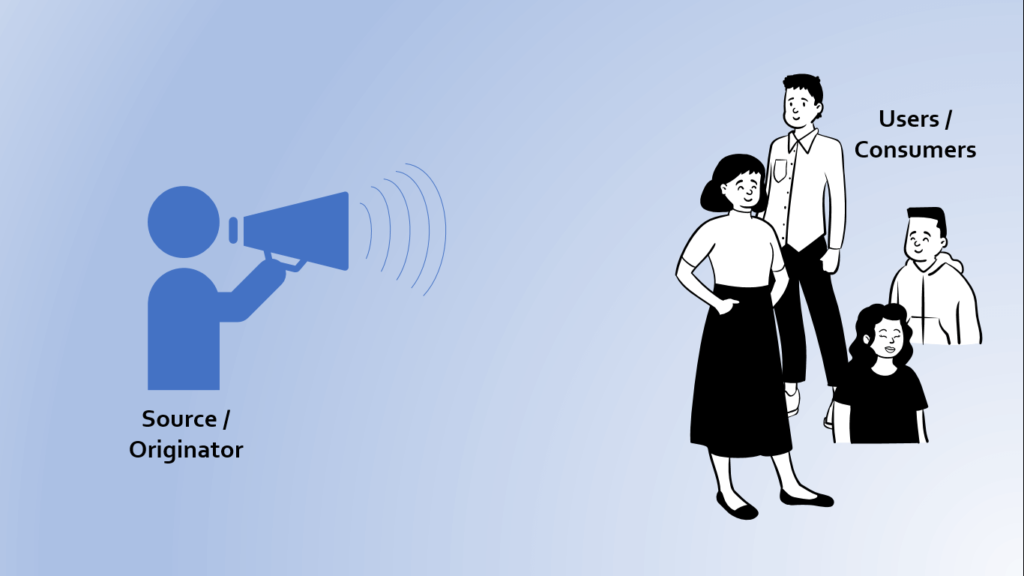
If the source is a person, then he/she is the sender or the originator of the information. If the destination is a person, then he/she is the user or consumer of information.
Location can also be used to define the origin and destination of the information. Hence, information (also known as processed data) can originate from the United States with a destination in South Africa.
Therefore, information transmission is the process of sending information from the originator or source to the user or consumer.
Why is information transmission important?
In recent times, data and information are essential to every organization as it aids production and enhances profitability. Through data and data analysis, products and service delivery can be streamlined to improve the well-being of consumers.
Also, companies use data to make strategic decisions and reposition their organizations for the future. Through data and information, problems can be anticipated and solutions proffered without a downturn in the organization’s fortune.
For example, Facebook uses scientific data analysis to gain insights into the social interaction of people. Similarly, Amazon uses information derived from predictive data analysis to increase customer satisfaction in eCommerce (data Flair).
To help you understand the high demand for data and data analysts among businesses today, check these statistics.

- The adoption of big data by companies has risen from 17% in 2015 to 53% in 2017 (Forbes).
- The US bureau of labor statistics predicts strong growth in data science jobs by 28% by 2026.
- Statista predicts a rise in the global big data market of 103 billion US dollars by 2027.
With such investment, companies would transmit information derived from data analysis for an increase in revenue.
The importance of information transmission
When data is processed, the information needs to get to the consumers or users. If it fails to get to the users, the original aim of the investment will be defeated. Therefore, the importance of information transmission includes:
- To satisfy the original aim and objective of data collection and analysis
- To help in the education of the receivers of information
- To eliminate ignorance and impending danger that could result in the absence of such information
- It helps to reduce the distance between the originator or sender and the user or receiver of information.
- Efficient information transmission justifies the budget and investment made in data collection and analysis.
- It brings the world into a global village where information can easily be shared and accessed
- It boasts the relevance of information and communication technology. If information is not transmitted, ICT will not be irrelevant.
Examples of information transmission
Information transmission entails sending information from one person or location to another. There are different ways information can be sent and received. Before we detail the methods of information transmission, let us look at a few examples relating to information transmission.
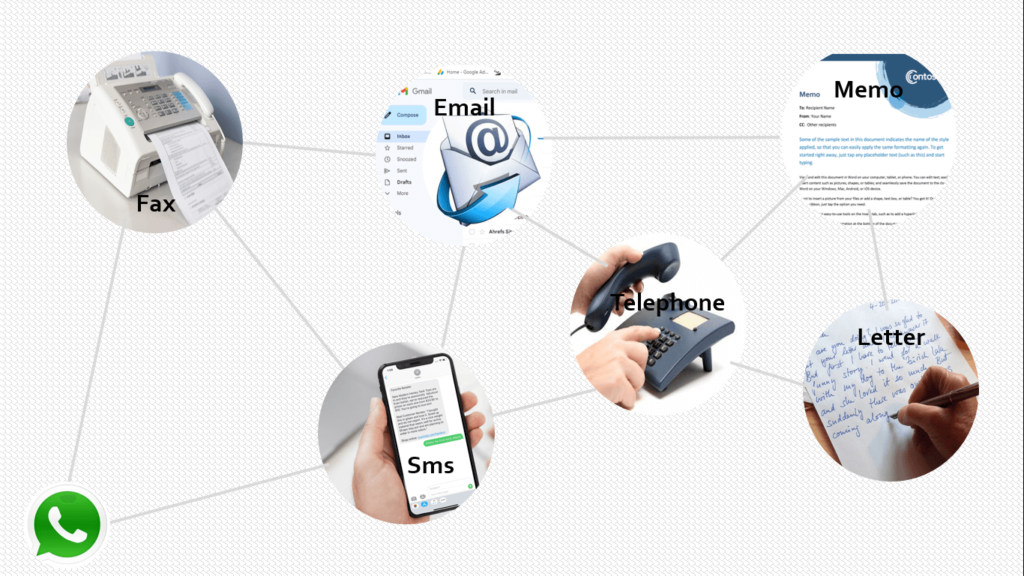
- Letter writing: One common example of information transmission is letter writing. A letter is a way of letting the receiver know your thoughts and feelings in a paper. It is common among siblings, family, and friends. For example, Uche lives in Lagos and wishes to inform his mother how he’s fairing after three months of absence. He writes a letter to his mother. It is always convenient to write a letter if you have a means of conveying it to the receiver. This is the major work of postal and courier services.
- Memo: In a workplace, instead of letters, memos are predominantly used. A memo is used to disseminate information to the relevant workforce in a work environment. A memo can contain announcements, notices, or information on work-related activities. For example, the manager of Zenith Bank wrote a memo instructing the security to shut the entrance door at 2.00 pm.
- Email: In recent times, emails are fast replacing letters and memos. Because emails transmit faster and are easier to document, offices use emails more frequently than memos. It is the predominant use of emails both for peers, family, and businesses that keep different companies in the business. For example, some companies use Microsoft Outlook, while others use Google mail services. To use email to transmit information, you need an email account and the email address of the receiver. [Learn how to create email].
- SMS: Short messaging service is a system of sending a message using a mobile telephone. It is the easiest and fastest means of transmitting information between two persons that own a mobile phone. However, as the name connotes, it is used for short messages or notices.
There are other examples, including making telephone calls, sending fax, etc. Each of these examples requires you to know how to use them for efficient information transmission.
Now that you have reached the end of this section, let’s recap what you’ve learned. We covered the definition of information transmission, its importance, and a few examples. Let’s now proceed to the classification of information transmission. Before we continue, it will be nice if you test your knowledge.
Test your Knowledge with these Key Questions:
- In October 2019, a fax was sent from the British House of Commons to Nigeria.
- Identify the originator of the information. (a) British House of Commons (b) Nigeria (c) London (d) the United Kingdom
- What is the destination of the information (a) UK (b) Niger (c) Nigeria (d) Abuja
- Information can also be defined as (a) Data communication (b) Processed data (c) Information transmission (d) Preserved data
- Two Key components of information transmission are (a) Data and information (b) information and person (c) sender and user (d) location and transmitter
- Data and information enhance production and profitability. TRUE / FALSE
- Example of a company that uses data and information in e-commerce business is (a) Facebook (b) Amazon (c) Microsoft (d) Netflix
- One of the importance of information transmission is (a) It reduces the distance between sender and receiver (b) It makes the world a global village (c) It educates the receiver of information (d) All of the above
- The Post Office is necessary for information transmission because it transmits (a) a memo (b) an Email (c) a fax (d) a letter
- Google and Outlook are examples of (a) Information transmission agents (b) email providers (c) telephone companies (d) postal agents
- A common example of information transmission used to communicate thoughts and feelings among siblings, family, and friends is (a) letter (b) fax (c) memo (d) call
- What is the full meaning of SMS?
Answers:
1(a) A 1(b) C 2. B 3. C 4. True 5. B
6. D 7. D 8. B 9. A 10. Short messaging service.
SECTION TWO
Types of Information Transmission
In this section, we are going to examine the two main classes of information transmission. These two means of transmitting information will help you differentiate between ancient and modern methods of information transmission.
They are handy and can be used to illustrate how to transmit information in ancient and modern times. If you are ready, let’s begin.
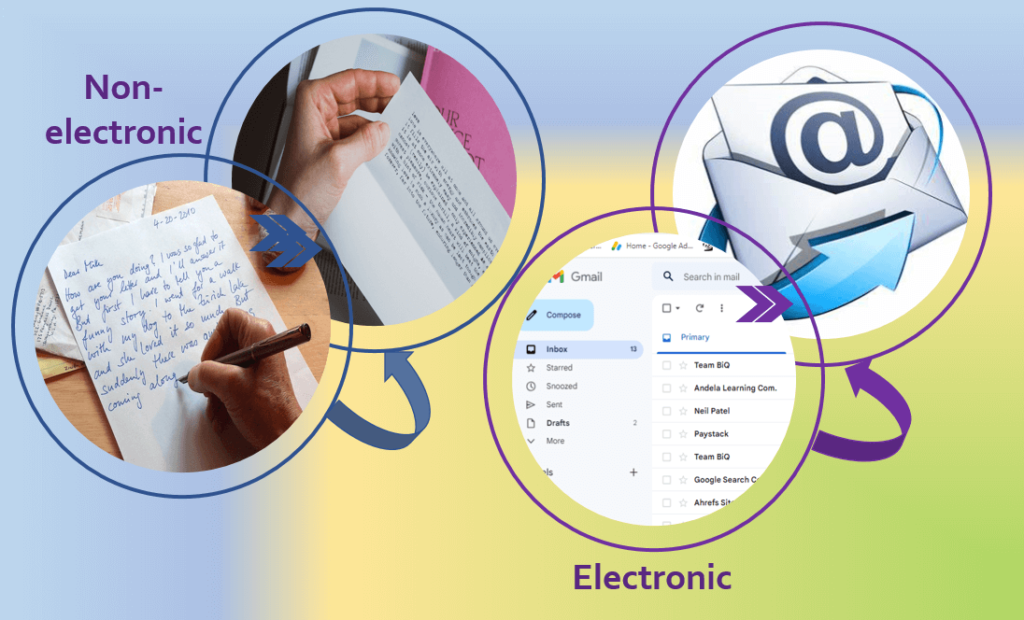
Electronic means of transmitting information
In modern times, information is being conveyed from one place to another using electronic methods. In electronic methods data is transmitted through electromagnetic signals. Electromagnetic signals include electrical voltage, radio waves, and microwave or infrared signals.
This means that information is transmitted through an electronic communication channel. It also means that the sender of information requires an electronic device to send the information. Similarly, the receiver of the information needs an electronic device to receive such information.
Some electronic methods of transmitting information include email, telephone, radio, television, etc.
Modes of electronic data transmission
In data communication, the electronic transmission of information can be carried out in three (3) different modes.

The three modes tell how efficiently the information can be transmitted from the sender to the receiver. Thus, we have simplex, half-duplex, and duplex modes.
Simplex mode:
In simplex mode, information travels in one direction only. This means that the sender sends out information to the receiver, but cannot receive feedback. Also, the receiver receives, but cannot send. A typical example of a simplex mode of communication channel is TV and radio broadcasting. The sender broadcasts at the TV station while the receiver receives via a television.
Half-duplex mode:
In half-duplex mode, communication travels in both directions but not at the same time. This means that the sender can send and receive, but not at the same time. When a sender sends, the receiver receives, and vice versa.
In recent times, the half-duplex mode of communication is not commonly used. Its use is predominantly found in military and paramilitary. An example of a half-duplex communication channel is a walkie-talkie or handheld transceiver.
Full duplex mode:
In a full duplex, information travels in both directions at the same time. This means that the sender can transmit and receive feedback without a wait time. This mode of communication is predominantly in use today. A given example of a full duplex communication channel is a telephone call.
Non-electronic means of transmitting information
This is a means of disseminating information using manual and non-electronic channels. Channels could be from person to person or print media. Person-to-person (s) channel includes common ancient methods of disseminating information such as oral, gong, whistling, sign, etc.
When person to person is used, one may have feedback or no feedback at all. For example, a gong is used to summon people to a community square, and oral communication elicits immediate feedback. However, sign and drawing diagrams do not require feedback.
The print channel can cover the distance, unlike the person-to-person channel. It includes the use of ink and print technology to convey information from one place to another. This includes the use of letters, newspapers and magazines, books, etc.
Now that you’ve understood the two main types of information transmission, let’s explore the modes of information transmission. Meanwhile, use this opportunity to test your knowledge.
Test your Knowledge with these Key Questions:
- The two main types of information transmission are (a) Electronic and non-electronic (b) duplex and simplex (c) half-duplex and full-duplex (d) none of the above
- Full duplex means (a) Unidirectional (b) Bidirectional (c) Half-directional (d) Full-directional
- A walkie-talkie is an example of a (a) simplex communication channel (b) duplex communication channel (c) half-duplex communication channel (d) handheld transceiver channel
- Examples of electronic communication devices are (a) paper and oral (b) fax and mobile phone (c) signs and newspapers (d) None of the above
- Television is a popular means of communication, however, it is (a) simple channel (b) duplex mode (c) half-duplex mode (d) simplex mode
- Whistling is an example of (a) an electronic means of communication (b) an old and obsolete means of communication (c) a duplex means of communication (d) a non-electronic means of communication
- The two major channels of non-electronic means of communication are (a) manual and print (b) person-to-person and print media (c) Oral and gong (d) person-to-person and sign
- Person to person channel of non-electronic communication is ideal where distance is not a barrier. TRUE/ FALSE
Answers:
1. A 2. B 3. C 4. B 5. D 6. D 7. B 8. True
SECTION THREE
Modes of Information Transmission
What form or style should the information be presented to the receiver? Which form do you think your receiver will understand the most?
There are three (3) different ways to package and send information to the consumer. In this section, I am going to distinguish between the three modes.
After this section, you can choose which mode best suit your audience.
Haven said that, let’s jump in.
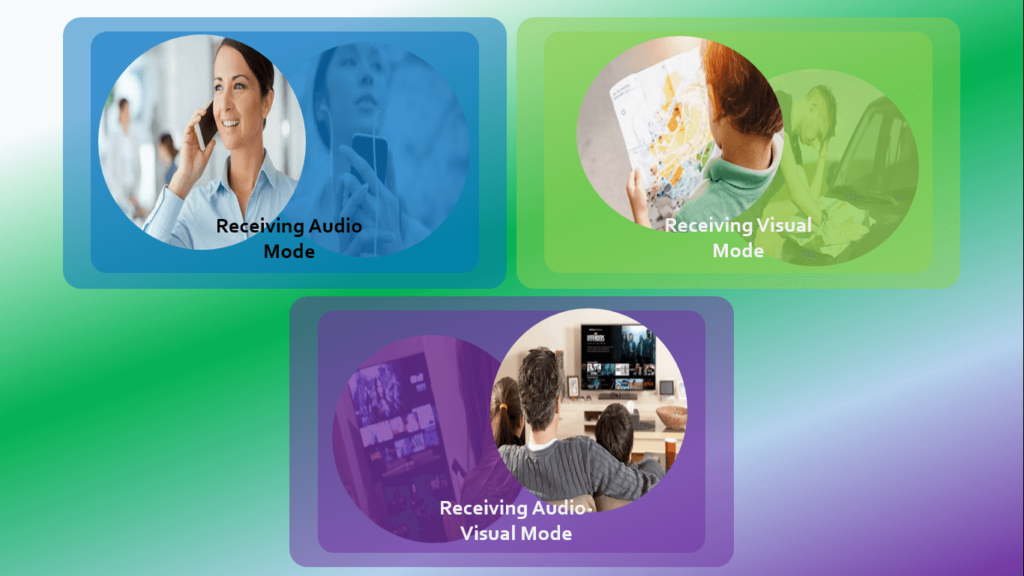
Audio: using sound to transmit information
Have you ever had a conversation with someone before, I guess you had one today. Have you ever made a phone call? In either case, the mode of communication is audio.
In audio mode, information is transmitted using sound. The sender transmits sound orally or using a mechanism that produces or transmits sound. The receiver hears or listens to the content using a device that interprets or produces sound.
Audio is the simplest and easiest mode of information transmission that you can use at all times. To transmit information to a distant audience, you may need an audio recording device.
Examples of audio modes include conversation, telephone calls, whistling, beating drums, and radio transmission. These instruments enable sound to be sent and heard by the users of information.
A podcast is another means of transmitting audio information over the internet using podcast platforms. In recent years, podcast platforms have experienced growth in podcast listeners. This point to the general acceptance of the audio mode of information transmission.
Though there has been a decline in the percentage growth of active podcasts. Insider predicts growth in the podcast industry to the tune of $94.88 billion in 2028.
Visual: using illustration to transmit information
Visual mode allows you to transmit information using signs and illustrations. This makes sense, especially, to children and those with hearing impediments.
The sender usually creates a visual representation of such information and passes it to the users. Mechanisms that enable users to visually decode or read such information are used during transmission. The users see such information, and decode and understand them.
Examples of visual modes include sign language, drawing diagrams, fire lightning, graphic arts, prints such as books, magazines, letters, etc. Others include Sms, emails, telex, fax, and web pages.
The later examples require electronic transmission; hence, the receivers need devices that can display such information. E.g., telephones, computers, and fax machines.
Audio-visual: combining sound and illustration when sending information
Recently, audio-visual is one of the best modes of information transmission. Audio-visual mode combines the strength of audio and visual when representing information.
Contents created using the audio-visual form are usually preferred over contents created with either audio or visual. This is because studies have shown that images and illustrations help to retain information (UKEssays, Global media).
Students also prefer audio-visual content because it increases retention ability. This mode of communication can be used when teaching, and when making presentations.
Examples of devices that transmit audio-visual mode include television, smartphones, and multimedia content on web pages.
Today, social media sites present important platforms for transmitting and receiving audio-visual information. Platforms such as Facebook, Twitter, Snapchat, YouTube, Instagram, Vimeo, etc, are helping people transmit audio-visual information.
This is because the consumption of such information has grown in recent times. According to Backlinko, 72% of consumers prefer to watch a video about a product than read text about the same product.
Also, there has been a decrease in active podcasts. The active podcasts on Apple dropped from 34% in June 2021 to 21% in April 2022 (The Podcast Host).
This points to the fact that the audio-visual mode is generally more acceptable than the other two modes.
Now that you know the different modes of information transmission, test your knowledge before we discuss the methods.
Test your Knowledge with these Key Questions:
- The three modes of information transmission are __________
- Which of the mode are you most likely to use every day? (a) Visual (b) audio (c) audio-visual (d) none
- There has been a growing trend in the consumption of videos in recent times. Which mode does video represent? (a) Video mode (b) Visual mode (c) Audio-visual (d) Audio-video
- A podcast is an example of ____ mode. (a) Audio-visual (b) Audio (c) Visual (d) None of the above
- Audio mode allows information to be transmitted through (a) Visuals (b) signs (c) illustrations (d) sound
- State three examples of the audio mode of transmission []
- A typical example of visual mode is (a) television (b) fire lightening (c) YouTube (d) telephone
- Print is an example of audio-visual mode. TRUE/ FALSE
- Video calling allows you to see the caller while listening to the conversation. This is an example of (a) Visual (b) audio-visual (c) audio (d) audio-video
Answers:
1. audio, visual and audio-visual 2. B 3. C 4. B 5. D 6. Conversation, telephone call, town crying 7. B 8. False 9. B
SECTION FOUR
Methods of Information Transmission
It is now time for you to learn the methods of transmitting the information. In this section, I will distinguish between two methods: the ancient and the modern methods.
In the end, you will understand how information was transmitted in the past, and how you can do the same today. Let’s quickly complete this section.
Ancient methods of transmitting information: how information is transmitted in ancient civilization
In the time past, before modern civilization, your forefathers were able to transmit information. During this period, simple but significant methods were used. Some of the methods used are discussed below.
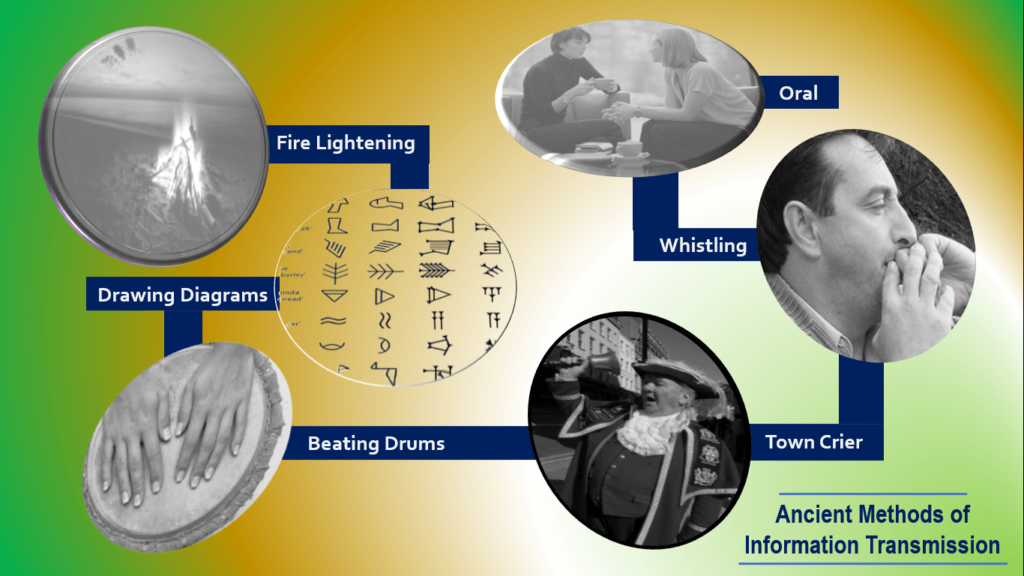
Oral communication
The oral method uses verbal communication to transmit information. It involves all forms of conversations that permit communication through the mouth.
It is used when the sender and receiver of information are within a close distance. The receiver usually hears the sender naturally and can give immediate feedback.
Drum beats
Drum beats involve hitting a drum or wooden gong to draw the attention of people. It is popularly used in rural areas.
In villages and communities, the custodian of the drum beats the drum for different purposes. For example, it could be used to indicate time.
In the early hours of the morning, the drum is beaten at different intervals to indicate time. People who do not have a clock usually use the beat to know what time to wake and prepare for their daily activities.
Drum beat can also be used to summon villagers on different occasions. Villagers could gather for meetings or communal events such as farming, palm fruit harvesting, etc.
Fire lightening
This involves the lightening of fire and letting the smoke send a message across. Fire lighting is used on two occasions.
Firstly, it is used as bush burning to signify the beginning of the farming season. In some communities, there is a specified time for bush clearing each farming season. After a specified interval, the bush is communally burnt to indicate the commencement of farming.
The second is to indicate presence. During farming, people use fire lighting to indicate their presence at a particular location. Also, fire is used to indicate settlement in farm settlement areas.
Town crying
This is a popular means of passing information across to concerned villagers. Town criers usually carry iron or wooden gong or a bell to draw the attention of villagers.
When the village head or village council has important information, they usually send a person to pass such information across. The person also called the town crier will go from hamlet to hamlet, drawing attention with a gong.
Town criers usually pass information in the early hours of the morning or late hours in the evening.
Whistling
Whistling is a sound produced with the mouth, or with the help of hands. It is usually used to pass a message among friends and colleagues who understand the different sounds made.
Drawing diagrams
This involves the use of symbols, illustrations, and diagrams to send information. In ancient times, diagrams and illustrations were popularly used to transmit information.
Symbols are used to represent items such that when used in communication, they make sense to the users.
Diagrams can be used on trees, landmarks, and walls to pass information to the public or a group. For example, there is a symbol that indicates royalty, market, river, etc.
Diagrams and illustrations are also used in the present time along the road to indicate environmental features. For example, there are symbols for railway crossings, U-turns, bridges, etc.
Making representation
Making representation is the use of an inanimate object to pass information. At the time past, an object can be sent from one person or community to another. Such an item is a representation of an event, a message or an instruction to be adhered to.
Items such as stick, cutlass, bow, salt or soap, etc can be sent. The receivers usually understood the message as soon as they receive such items.
For example, a stick can be sent to indicate a warning, a cutlass to indicate impending war, salt to indicate marriage, etc.
Modern methods of transmitting information:
Methods of transmitting information in recent times abound. Communication technology keeps widening the scope daily to make information transmission more efficient.
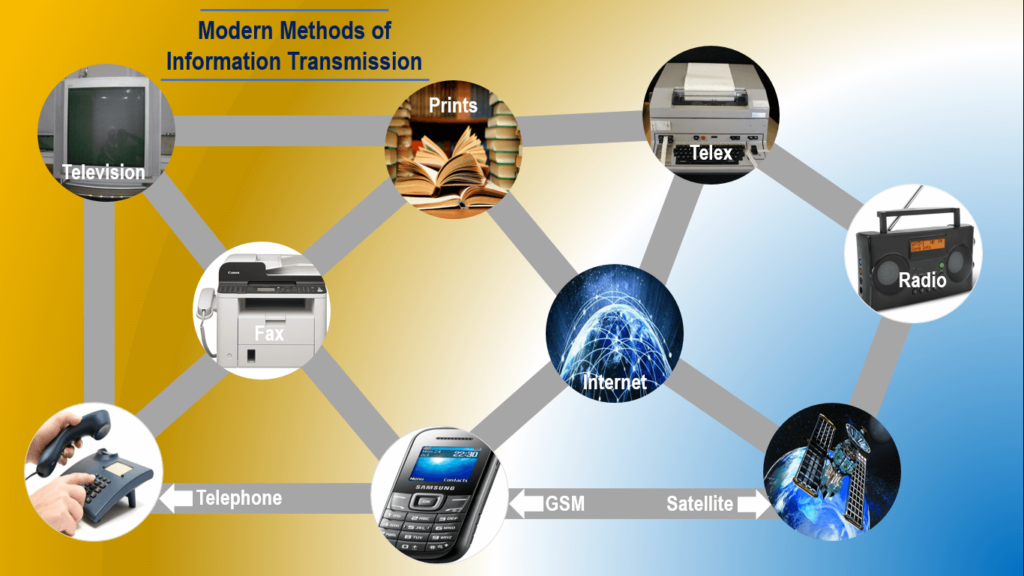
Let us look at some of the methods used in modern times to transmit information.
Prints
This includes written and printed documents that convey information. It could be books, newspapers, letters, etc.
Telephone
This is used by two or more persons who are distance apart to communicate with each other. This kind of information transmission requires a telephone number and a telephony device.
Telex
A telex is a device used to transmit text information through a switched network of teleprinters. The use of this method has declined.
Radio
Radio is a device that detects radio waves transmitted within a given area. Radio communication is a broadcast to a group of people that could be in a given location where such signals can be received.
Television
Television is used by information users to decode audio-visual information. It can detect and decode electromagnetic signals transmitted via satellites and antennas.
It can also be used to view information packaged on DVDs, CDs, and Blu-ray. Smart tv can be used to connect to a media streaming service such as Netflix.
Fax
A fax is a device that can transmit the scanned form of texts and images through a telephone line. It is usually connected to a printer.
Satellite
A satellite is an object placed in orbit to enhance communication, weather forecasts, etc. It transmits information into space and makes it available to smaller satellites.
Satellites are important components of modern communication and play important role in telecommunications, radio, and tv broadcasting.
Internet
The internet provides a system for global communication. It allows multiple computers to interconnect with each other and be able to exchange information.
To exchange information using the internet, you will need a device that is connected to the internet. To be connected, you will need a modem or a device that can browse, and an internet service provider.
GSM
Global System for Mobile communication is an open, digital cellular technology used for transmitting mobile voice and data services.
It is used to transmit voice and text messages through a connected SIM card. The SIM card makes it possible for such transmissions to take place without a connected cable.
The SIM card (Subscribers Identification Module) has a number used to identify each subscriber.
Conclusion
I hope that you understood each of the sections discussed. Now, I want to know your take. If there is anything you think I omitted, let me know by leaving a comment below.
Meanwhile, you can brace your knowledge with the following questions.
Test your Knowledge with these Key Questions:
- Which of the following is not an ancient method of information transmission? (a) oral (b) prints (c) drum beats (d) whistling
- The method of information transmission that requires an individual to carry a gong from place to place is (a) whistling (b) town crying (c) drum beats (d) oral communication
- Which ancient method uses diagrams and illustrations to send information? (a) making representation (b) fire lightening (c) drawing diagrams (d) town crying
- GSM means ____ (a) Global system mobile (b) Global system for mobile communication (c) Globe systematic mobile communication (d) global system of motion commerce
- Which method can interconnect computers and enable global information exchange? (a) GSM (b) satellite (c) telex (d) internet
- Which of the following methods enables the exchange of text electronically? (a) Email (b) Fax (c) GSM (d) All of the above
- An important component of communication that enhances telecommunication, radio, and TV broadcasting is (a) Television (b) Satellite (c) Radio (d) Internet
Answers:
1. B 2. B 3. C 4. B 5. D 6. D 7. B





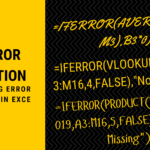
Wow! This is really comprehensive. It’s got all I need at one place. Thank you for this great piece.
Thanks